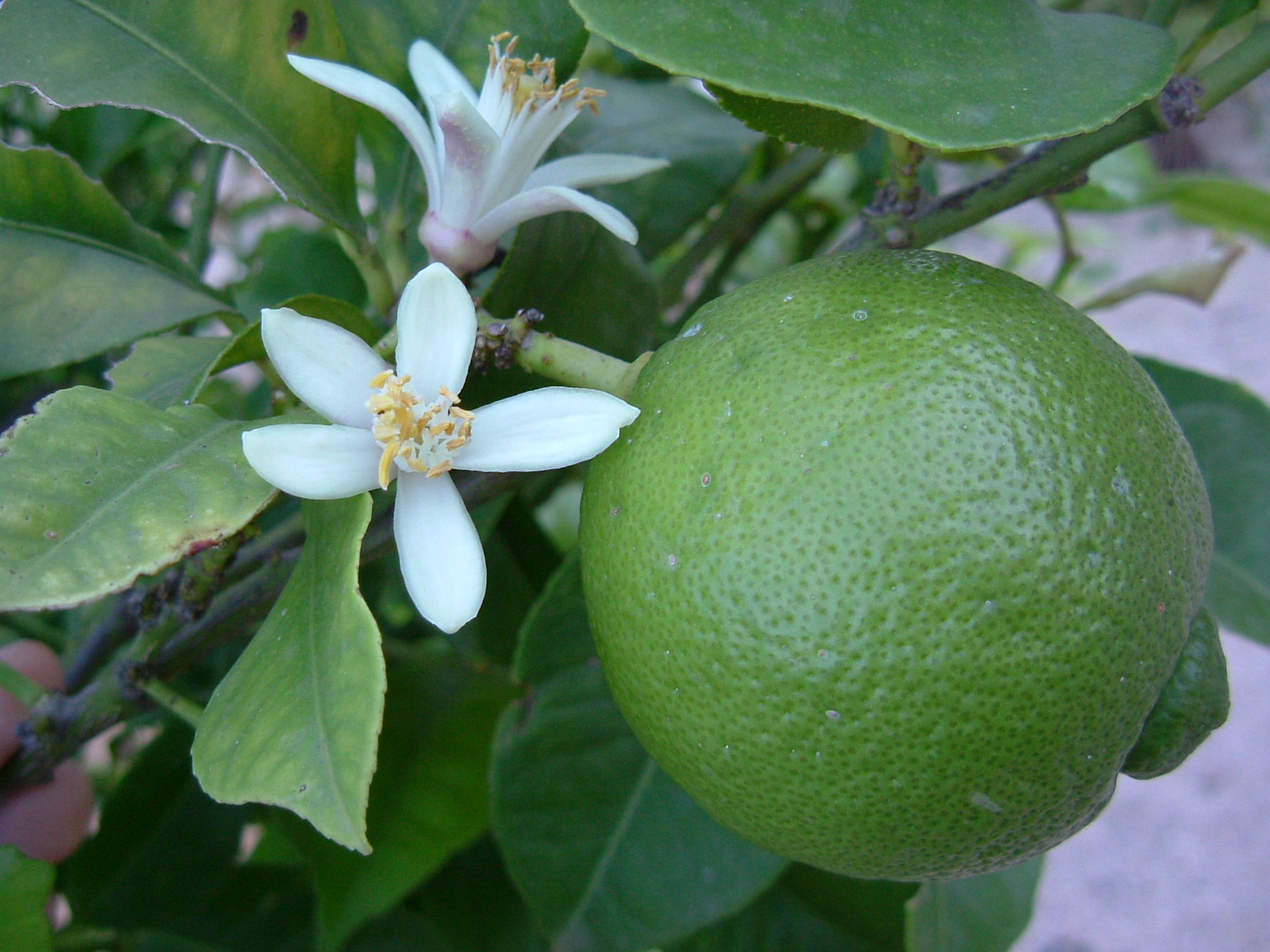|
Rangpur (fruit)
Rangpur, ''Citrus'' × ''limonia'' or ''Citrus reticulata'' × ''medica'', sometimes called the rangpur lime, mandarin lime or lemandarin, is a hybrid between the mandarin orange and the citron. It is a citrus fruit with a very acidic taste and an orange peel and flesh. Common names Common names for this fruit include rangpur, the name of a city now in Bangladesh. Rangpur is also known in the Indian subcontinent as ''Sylhet lime'' (after another region also now in Bangladesh), ''surkh nimboo'', and ''sharbati''. It is known as a ''canton-lemon'' in South China, a ''hime-lemon'' in Japan, as ''limão-cravo'' in Brazil, and ''mandarin-lime'' in the United States. History ''Citrus'' × ''limonia'' was introduced into Florida in the late nineteenth century by Reasoner Brothers of Oneco, who obtained their seeds from northwestern India. Though often described as a lemon hybrid, genomic analysis has shown it to be an F1 hybrid of a female citron (''Citrus medica'') and a male mandarin ... [...More Info...] [...Related Items...] OR: [Wikipedia] [Google] [Baidu] |
Pehr Osbeck
Pehr Osbeck (1723 – 23 December 1805) was a Swedish explorer, naturalist and an apostle of Carl Linnaeus. He was born in the parish of Hålanda on Västergötland and studied at Uppsala with Carolus Linnaeus. Naturalist in Canton In 1750–1752 he travelled as chaplain on the ship ''Prins Carl'' to Asia where he spent four months studying the flora, fauna, and people of the Canton region of China. He returned home just in time to contribute more than 600 species of plant to Linnaeus' ''Species Plantarum'', published in 1753. In 1757 he published the journal of his voyage to China, ''Dagbok öfwer en ostindisk Resa åren 1750, 1751, 1752'', which was translated into German in 1762 and English in 1771. In 1758, he was elected a member of the Royal Swedish Academy of Sciences. Later career He ended his career as the parish priest of Våxtorp and Hasslöv in Halland, where he died in 1805. Collections His large collections are preserved in Sweden and the UK. He is commemor ... [...More Info...] [...Related Items...] OR: [Wikipedia] [Google] [Baidu] |
Lime (fruit)
A lime is a citrus fruit, which is typically round, lime (color), lime green in colour, in diameter, and contains acidic juice vesicles. There are several species of citrus trees whose fruits are called limes, including the Key lime (''Citrus aurantiifolia''), Persian lime, kaffir lime, finger lime, blood lime, and Citrus glauca, desert lime. Limes are a rich source of vitamin C, are sour, and are often used to accent the flavours of foods and beverages. They are grown year-round. Plants with fruit called "limes" have diverse genetic origins; limes do not form a monophyletic group. The term ''lime'' originated in other languages (from French language, French , from Arabic , from Persian language, Persian , ). Plants known as "lime" The difficulty in identifying exactly which species of fruit are called lime in different parts of the English-speaking world (the same problem applies to synonyms in other European languages) is increased by the botanical complexity of the ''Citru ... [...More Info...] [...Related Items...] OR: [Wikipedia] [Google] [Baidu] |
Garden Plants Of Asia
A garden is a planned space, usually outdoors, set aside for the cultivation, display, and enjoyment of plants and other forms of nature. The single feature identifying even the wildest wild garden is ''control''. The garden can incorporate both natural and artificial materials. Gardens often have design features including statuary, follies, pergolas, trellises, stumperies, dry creek beds, and water features such as fountains, ponds (with or without fish), waterfalls or creeks. Some gardens are for ornamental purposes only, while others also produce food crops, sometimes in separate areas, or sometimes intermixed with the ornamental plants. Food-producing gardens are distinguished from farms by their smaller scale, more labor-intensive methods, and their purpose (enjoyment of a pastime or self-sustenance rather than producing for sale, as in a market garden). Flower gardens combine plants of different heights, colors, textures, and fragrances to create interest and delight the ... [...More Info...] [...Related Items...] OR: [Wikipedia] [Google] [Baidu] |
Flora Of India (region)
The flora of India is one of the richest in the world due to the wide range of climate, topology and habitat in the country. There are estimated to be over 18,000 species of flowering plants in India, which constitute some 6-7 percent of the total plant species in the world. India is home to more than 50,000 species of plants, including a variety of endemics. The use of plants as a source of medicines has been an integral part of life in India from the earliest times. There are more than 3000 Indian plant species officially documented as possessing into eight main floristic regions : Western Himalayas, Eastern Himalayas, Assam, Indus plain, Ganges plain, the Deccan, Malabar and the Andaman Islands. Forests and wildlife resources In 1992, 743,534 km2 of land in the country was forested of which 92 percent was government land. This amounts to 22.7 percent land coverage, compared to the recommended 33 percent of the National Forest Policy Resolution 1952. The majority ... [...More Info...] [...Related Items...] OR: [Wikipedia] [Google] [Baidu] |
Citrus Hybrids
Citrus taxonomy is the botanical classification of the species, varieties, cultivars, and graft hybrids within the genus ''Citrus'' and related genera, found in cultivation and in the wild. Citrus taxonomy is complex and controversial. Cultivated citrus are derived from various citrus species found in the wild. Some are only selections of the original wild types, many others are hybrids between two or more original species, and some are backcrossed hybrids between a hybrid and one of the hybrid's parent species. Citrus plants hybridize easily between species with completely different morphologies, and similar-looking citrus fruits may have quite different ancestries. Some differ only in disease resistance. Conversely, different-looking varieties may be nearly genetically identical, and differ only by a bud mutation. Genomic analysis of wild and domesticated citrus cultivars has suggested that the progenitor of modern citrus species expanded out of the Himalayan foothills in a ... [...More Info...] [...Related Items...] OR: [Wikipedia] [Google] [Baidu] |
Citrus Rootstock
Citrus rootstock are plants used as rootstock for citrus plants. A rootstock plant must be compatible for scion grafting, and resistant to common threats, such as drought, frost, and common citrus diseases. Principal rootstocks Five types of rootstock predominate in temperate climates where cold or freezing weather is not probable, especially Florida and southern Europe: * Sour orange: the only rootstock that truly is an orange (the '' Citrus'' × ''aurantium'' or bitter orange). It is vigorous and highly drought-resistant. * '' Poncirus trifoliata'': a close relative of the genus ''Citrus'', sometimes classified as ''Citrus trifoliata''. It is especially resistant to cold, the tristeza virus, and the oomycete '' Phytophthora parasitica'' (root rot), and grows well in loam soil. Among its disadvantages are its slow growth—it is the slowest growing rootstock—and its poor resistance to heat and drought. It is primarily used in China, Japan, and areas of California with heavy ... [...More Info...] [...Related Items...] OR: [Wikipedia] [Google] [Baidu] |
Terrace (building)
A terrace is an external, raised, open, flat area in either a landscape (such as a park or garden) near a building, or as a roof terrace on a flat roof. Ground terraces Terraces are used primarily for leisure activity such as sitting, strolling, or resting.Davies, Nicholas and Jokiniemi, Erkki. ''Dictionary of Architecture and Building Construction''. New York: Routledge, 2008, p. 379. The term often applies to a raised area in front of a monumental building or structure, which is usually reached by a grand staircase and surrounded by a balustrade. A terrace may be supported by an embankment or solid foundation, either natural or man-made.Harris, Cyril M. ''Illustrated Dictionary of Historic Architecture''. New York: Dover Publications, 1977, p. 529. But terraces are always open to the sky and may or may not be paved.Ching, Frank. ''A Visual Dictionary of Architecture''. Hoboken, N.J.: Wiley, 2012, p. 17. History and examples of terraces Agricultural terracing can be trac ... [...More Info...] [...Related Items...] OR: [Wikipedia] [Google] [Baidu] |
Patio
A patio (, ; ) is an outdoor space generally used for dining or recreation that adjoins a structure and is typically paved. In Australia, the term is expanded to include roofed structures such as a veranda, which provides protection from sun and rain. Pronunciation can vary in Australia as well: ''patty-oh'' is perhaps more common generally although ''payshee-oh'' may be used by older Australians. Construction Patios are most commonly paved with concrete or stone slabs (also known as paving flags). They can also be created using bricks, block paving, tiles, cobbles or gravel. Other kinds of patio materials these days include alumawood, aluminum, acrylic and glass. Other options include concrete, stamped concrete, and aggregate concrete. Restaurant patio ''Patio'' is also a general term used for outdoor seating at restaurants, especially in Canadian English. While common in Europe even before 1900, eating outdoors at restaurants in North America was exotic until the 19 ... [...More Info...] [...Related Items...] OR: [Wikipedia] [Google] [Baidu] |
Ornamental Tree
Ornamental plants or ''garden plants'' are plants that are primarily grown for their beauty but also for qualities such as scent or how they shape physical space. Many flowering plants and garden varieties tend to be specially bred cultivars that improve on the original species in qualities such as color, shape, scent, and long-lasting blooms. There are many examples of fine ornamental plants that can provide height, privacy, and beauty for any garden. These ornamental perennial plants have seeds that allow them to reproduce. One of the beauties of ornamental grasses is that they are very versatile and low maintenance. Almost all types of plant have ornamental varieties: trees, shrubs, climbers, grasses, succulents, aquatic plants, herbaceous perennials and annual plants. Non-botanical classifications include houseplants, bedding plants, hedges, plants for cut flowers and ''foliage plants''. The cultivation of ornamental plants comes under floriculture and tree nurseries, wh ... [...More Info...] [...Related Items...] OR: [Wikipedia] [Google] [Baidu] |
Tanqueray
Tanqueray is a brand of gin produced by Diageo plc. It originated in London. While it does not command a sizable market share in its native market, its largest market is the US. Tanqueray is a London dry gin, reflecting its distillation process and origin in Bloomsbury, London. Tanqueray London dry gin is made by four time distilled grain, with select botanicals added during the second distillation. While the Tanqueray recipe is a closely guarded trade secret, it is known to contain four botanicals: juniper, coriander, angelica root and liquorice, the same four botanicals from the original recipe. It is one of Diageo's key "strategic brands" earmarked for prioritisation in promotion and distribution worldwide. History Tanqueray gin was initially distilled in 1830 by Charles Tanqueray in Bloomsbury. The retail outlet of Edward & Charles Tanqueray & Co was established on Vine Street, London, in 1838. When Charles died in 1868, his son Charles Waugh Tanqueray inher ... [...More Info...] [...Related Items...] OR: [Wikipedia] [Google] [Baidu] |
Diageo
Diageo plc ( ) is a British Multinational corporation, multinational alcoholic beverage company, with its headquarters in London, England. It is a major distributor of Scotch whisky and other spirits and operates from 132 sites around the world. Diageo-owned distilleries produce 40 percent of all Scotch whisky with over 24 brands, such as Johnnie Walker, Justerini & Brooks, J&B and Buchanan's. Its leading brands outside whisky include Guinness, Smirnoff, Baileys liqueur, Captain Morgan rum and Tanqueray and Gordon's Gin, Gordon's gin. Diageo has a primary listing on the London Stock Exchange and is a constituent of the FTSE 100 Index. It has a secondary listing on the New York Stock Exchange as American depositary receipts. History Formation Diageo was formed in 1997 from the merger of Guinness plc and Grand Metropolitan. Its creation was driven by the executives Anthony Greener and Philip Yea at Guinness, along with George Bull and John McGrath of Grand Metropolitan. Anthony G ... [...More Info...] [...Related Items...] OR: [Wikipedia] [Google] [Baidu] |
F1 Hybrid
F1 hybrid (also known as filial 1 hybrid) is the first filial generation of offspring of distinctly different parental types. F1 hybrids are used in genetics, and in selective breeding, where the term F1 crossbreed may be used. The term is sometimes written with a subscript, as F hybrid. Subsequent generations are called F, F, etc. The offspring of distinctly different parental types produce a new, uniform phenotype with a combination of characteristics from the parents. In fish breeding, those parents frequently are two closely related fish species; however, in plant and animal breeding, the parents often are two inbred lines. Gregor Mendel focused on patterns of inheritance and the genetic basis for variation. In his cross-pollination experiments involving two true-breeding, or homozygous, parents, Mendel found that the resulting F1 generation was heterozygous and consistent. The offspring showed a combination of the phenotypes from each parent that were genetically domin ... [...More Info...] [...Related Items...] OR: [Wikipedia] [Google] [Baidu] |








